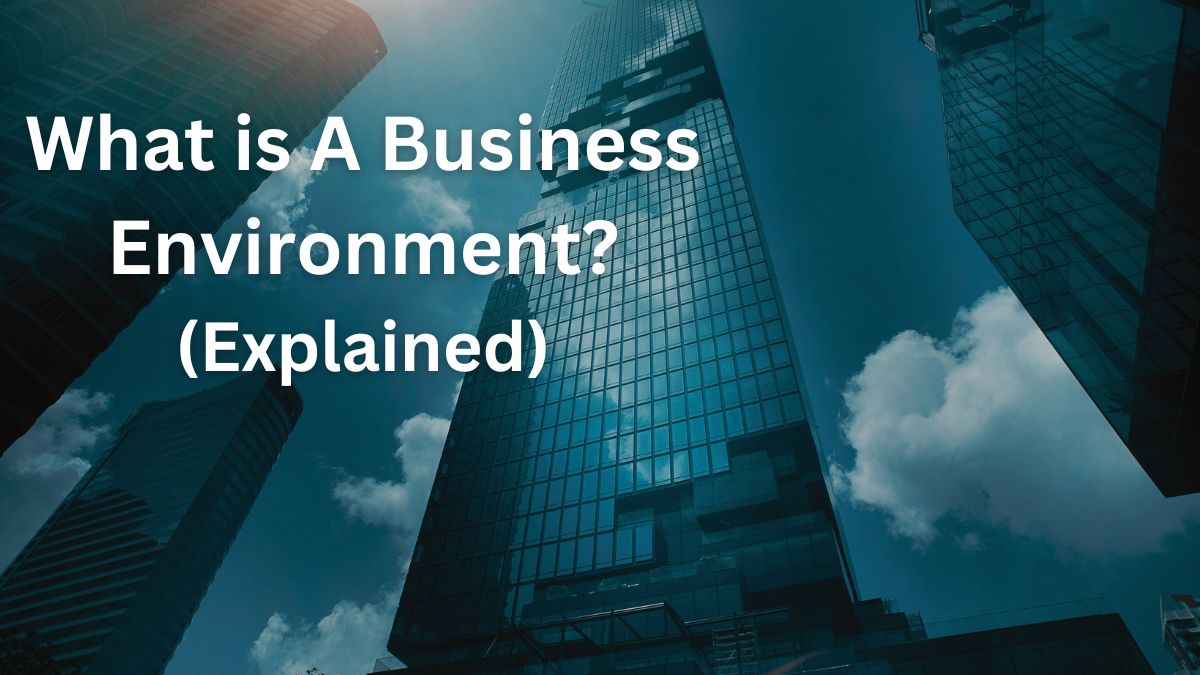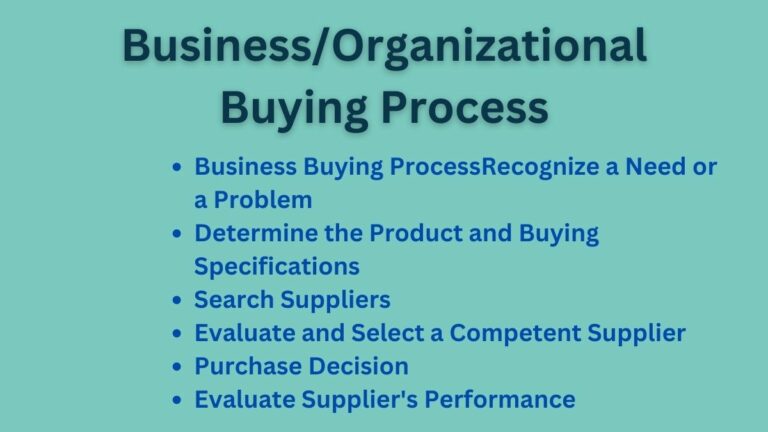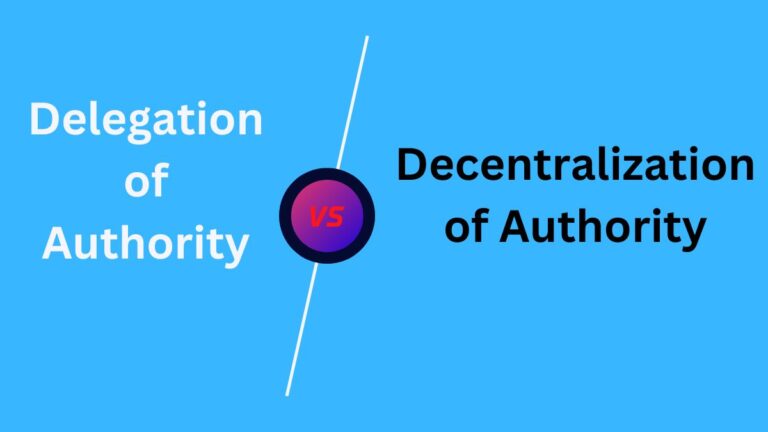What is a Business Environment? Definition, Features, Components, Importance, & Strategy To Adapt
Businesses i.e. organizations can not operate in isolation they have to regularly interact with people, customers, competitors, and other parties that have a hand in their performance. Every business is surrounded by the components of the environment it operates. They directly or indirectly have affected business performance.
Here we will understand what the business environment is, its features, importance, and factors that influence the businesses and strategies to adapt.
What is Business Environment?
A business environment is a combination of factors (internal and external) that directly or indirectly affect the operations, performance, profitability, and growth of an organization.
The ability of an organization to respond, adapt, and manage these environmental factors determines the effectiveness of the organization. The internal factors are manageable by the management whereas the management must adapt to or confront the external factors.
The environment is dynamic which changes with the passage of time and is also complex and difficult to forecast. This provides both threats and opportunities to the organization.
The organization which is successful and profitable today may not be in the future as the environment is uncertain. It is necessary for managers to keep a close eye on environmental changes that may help them to grab opportunities and keep them informed to digest threats and challenges.
Characteristics of Business Environment
The common features of the business organization include the following:
Dynamic
The business environment is dynamic in nature. It is not static it changes with time. Due to the dynamic nature, the business strategy which is fit for today become obsolete in the future. There are different factors that are responsible for bringing continuous changes in the business surroundings.
Creates Opportunities and Threats
The environment offers both threats and opportunities to organizations. The opportunities are that condition if a company exploits them they get the benefit. And, threats are conditions that restrict the company’s goal achievement.
Related: Challenges in Management and Ways To Overcome Them
Uncertain
Due to the dynamic nature of the environment holds it is hard to predict future events. It is one of the most common characteristics of the business environment because what will happen in the future and how it affects the firm can not be forecasted with a hundred percent guarantee.
Relative
The environment and the factors that affect the organization’s existence are not the same everywhere. Based on the location and the surroundings of the business it is different. The two countries’ environmental factors can not be the same.
Multi-Faceted
A single business environmental factor can be viewed, studied, and used differently by different organizations. Similarly, the same factor can affect differently to different business situations. Every environmental factor has a far-reaching impact on organizational performance.
Components/Types of Business Environment
The business environment is classified into two types based on what is controllable by the managers and what is not. The two types include the internal and external environment. All the factors of the internal and external environment have a significant influence on an organization’s performance. They are:
Also Read: What is Organizing?
Internal Environment
The internal environment is the environment that exists within the business organization. This determines the strengths and weaknesses that hold the organization.
And, the factors that come into this environment can be controlled and directed in a way the organization wants. They are:
- Organizational Resources – From the organizational resources, the employees are the most important. They are directly involved in designing various plans and strategies and implementing them. The effectiveness of human resources greatly determines the effectiveness of organizational goals achievement. In addition to humans, other organizational resources include technology, capital, raw materials, and other tangible and intangible resources.
- Organizational Structure – The organizational structure is the key to employee motivation and organizational success. It consists of the overall framework of the organization’s roles, rules, and hierarchy, as authority-responsibility systems that affect the organizational objectives.
- Organizational Culture – Organizational culture includes the shared norms, beliefs, and values that guide the employee’s behavior in the organization. It helps to understand the new employees about the goals, objectives, and functions of the organization.
- Organizational Goals and Policies – Every organization has a specific goal which is the desired outcome of that organization. As such every activity of the organization is conducted concerning the desired goals. Policies are the general guidelines for managerial decision-making. Such policies are developed by the top management.
- Other Factors – The other internal environment factors include the trade union, communication systems, nature of products, size of the organization, informal organization, leadership style, control system, etc.
External Environment
The external environment of the business environment consists of those factors that are beyond the organizational scope. These factors can not be controlled by the organization.
The external environment also consists of two types micro and macro which are great sources of opportunities and threats to the organization. They are:
Task/Micro Environment
The micro-environment includes the factors that affect the task or activities of the organization. It is the immediate external factor for the organization.
Although the micro-environment is beyond the control of the organization its components to some extent can be influenced. These include.
- Customers – Customers are the main focus of the organization. They are the main source of revenue organizations generate. As their desire, wants, tastes and preferences are changing with time organizations need to develop products suitable to satisfy them.
- Competitors – Competitors can be other organizations or players who offer similar products and aim to target your customers. The low competition creates a more congenial situation for the business and vice versa.
- Suppliers – They are the parties who supply the required materials, machines, technology, human resources, office supplies, and other necessary resources.
- Distributors – They are also one of the important factors of a micro-environment that serve the organization by distributing the products of the organization to the target customers.
- Government – Government can make changes in rules, regulations, and acts to establish effective systems to regulate the business’s practices.
- Pressure Groups – Most pressure groups advocate in favor of society and customers’ welfare in relation to price, quality, service, environmental protection, waste management, etc. Such groups create pressure on organizations in order to make favorable decisions on such issues.
- Financial Institutions – Organizations need different kinds of loans. The availability of financial institutions and their relations influence the interest rate, loan availability, etc.
- Strategic Allies – Strategies allies help one business to get expertise from other companies to gain new business ideas and knowledge.
General/Macro Environment
The macro-environment factors include those which can not be controlled by the management but substantially influence the industry as a whole.
The factors of the macro environment are commonly referred to as PESTLEG i.e. political, economic, social, technological, legal, environmental, and global. They are:
- Political Factors – The political system of the country, the role of political parties, the stability of political situations, bureaucratic structure, the ideology of ruling parties, conditions of human rights, political rights, government-business relationship, etc. can have a significant role in the business activities as the factors of political environment.
- Economic Factors – The economic factors include the economic condition of the country. This includes the economic system, economic policies, economic conditions, capital markets, economic growth, etc.
- Socio-Cultural Factors – Socio-cultural factors comprise social institutions, attitudes, beliefs, norms, values, religion, language, culture, expectations of people in society, etc.
- Technological Factors – These include the technological factors that affect business operations. The development of technology, automation, technological awareness, R&D budget, etc. is some of its factors.
- Legal Factors – The legal rules and regulations that affect the business’s existence include in legal factors. While opening or closing the business operation a business must adhere to the particular nation’s laws.
- Environmental Factors – In includes the concern of business regarding the protection of the natural environment.
- Global Environment – Businesses are now obliged to respond to the global environment. Since the economy has globalized businesses are now influenced by different global factors – global business practices, international products, etc.
Importance of Business Environment
Businesses can not survive in a vacuum. Every organization gets inputs from the environment, transforms them, makes finished products, and supplies them to the different parties of the environment.
Now the environment is dynamic and flooded with competition. Keeping a close eye on the happening in the environment has been a critical task for modern managers to stay updated, be prepared for future challenges, and achieve competitive advantage.
Following are some benefits your business can get by understanding its surrounding environment. They are:
- Helps to identify potential opportunities and trends.
- Helps to be prepared for confronting probable threats.
- Helps to achieve a competitive advantage and position.
- Helps to formulate effective plans and strategies.
- It May help to outperform competitors.
- Helps to cope with changes.
- Keeps your business up to date.
- It May help to get a first-mover advantage.
- Reduces the failure rate on implementation.
- Increases the performance of the business.
Strategies To Adapt To Environmental Changes
So far we discussed, that you probably have understood how the business environment affects organizations. As it is complex and uncertain it also provides both threats and opportunities to businesses.
Following are some of the strategies your business can use to adapt to environmental influence.
Information Management
Organizations can adapt to environmental influence through information management. It consists of many techniques like environmental scanning, information systems, boundary spanners, etc. There must be a proper information management system within the organization so that managers can gather and organize the relevant information in the most prominent forms to meet their needs.
Strategic Response
A strategic response is a process of applying the existing plans and policies if successfully functioning, or developing new plans and policies to cope with environmental change. The common approaches of strategic response are the least resistance, proceeding with caution, and dynamic response.
Merger, Takeover, Acquisition, and Alliances
In a competitive business environment, business organizations may face different threats and challenges due to environmental changes. To adapt to environmental changes, business organizations may implement different strategies consisting of mergers, takeovers, acquisitions, and alliances.
Organization Design and Flexibility
All business firms have their own organizational structure, rules, regulations, and standard operating procedures. Such designs can be more fit in a stable environment.
However, in a dynamic environment, it is essential to choose a few standard operating procedures. Your manager should consider the organic design and should be flexible in decision-making on the basis of time and situation. It is a must to adapt to environmental changes.
Direct Influence on the Environment
When organizations are able to forecast environmental changes, they may influence the environment directly in many ways like lobbying and bargaining and assigning long-term contracts. Such influence on the environment is a must for all business organizations to operate in a dynamic environment.
For example, lobbying and bargaining with government agencies through authorized representatives like the chamber of commerce and industry, etc. Similarly, business organizations can influence their suppliers by signing long-term contracts with a fixed price to defend against inflation.
Read Next: What is Workforce Diversity?
Sajan Kushmi is a content writer with more than 4 years of experience. He holds BIM Degree. He write on the topics related to Management, Marketing, and Entrepreneurship.






